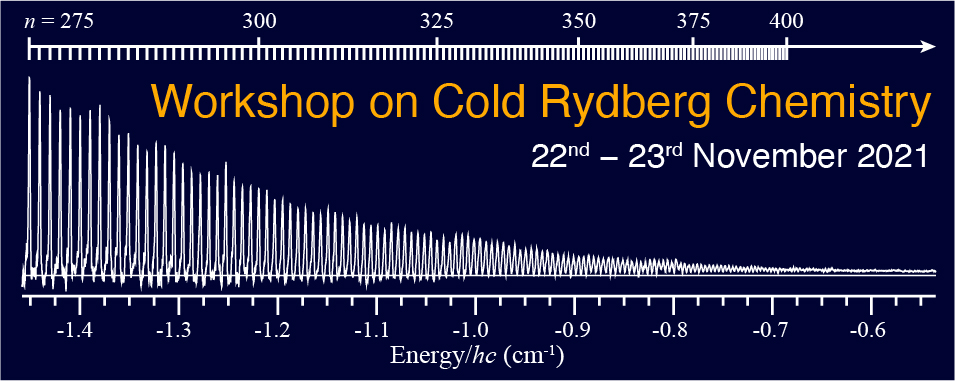Atoms and molecules excited to a Rydberg state possess one electron residing predominantly far away from the ion core. For sufficiently large values of the principal and/or orbital-angular-momentum quantum numbers of the Rydberg electron, the ion core can be considered as isolated from the Rydberg electron. Its structure and dynamics are, to a good approximation, the same as the bare ion. This...
Precision spectroscopy of high molecular Rydberg states represents a powerful method for the determination of ionization energies and of rovibronic intervals of molecular ions. In this context, the one- and two-electron molecules H$_2^+$ and H$_2$ are particularly attractive because their energy levels can be calculated with extraordinary accuracy, allowing to test molecular quantum...
High orbital angular momentum ( $\ell \geq 3$ ), core-nonpenetrating Rydberg states can be well described by a simplified model in which the Rydberg electron is only weakly perturbed by the long-range electric properties (i.e., multipole moments and polarizabilities) of the ion-core. We have used a long-range model to describe the vibrational autoionization dynamics of high-$\ell$ Rydberg...
High Rydberg states of small molecules play an important role in electron-ion recombination in laboratory, atmospheric, and astrophysical plasmas [1-3]. However, until recently laboratory studies of the slow decay dynamics of molecules in these excited states have not been possible [4,5]. Here we describe a unique, state-of-the-art cryogenically cooled chip-based Rydberg-Stark decelerator, and...

